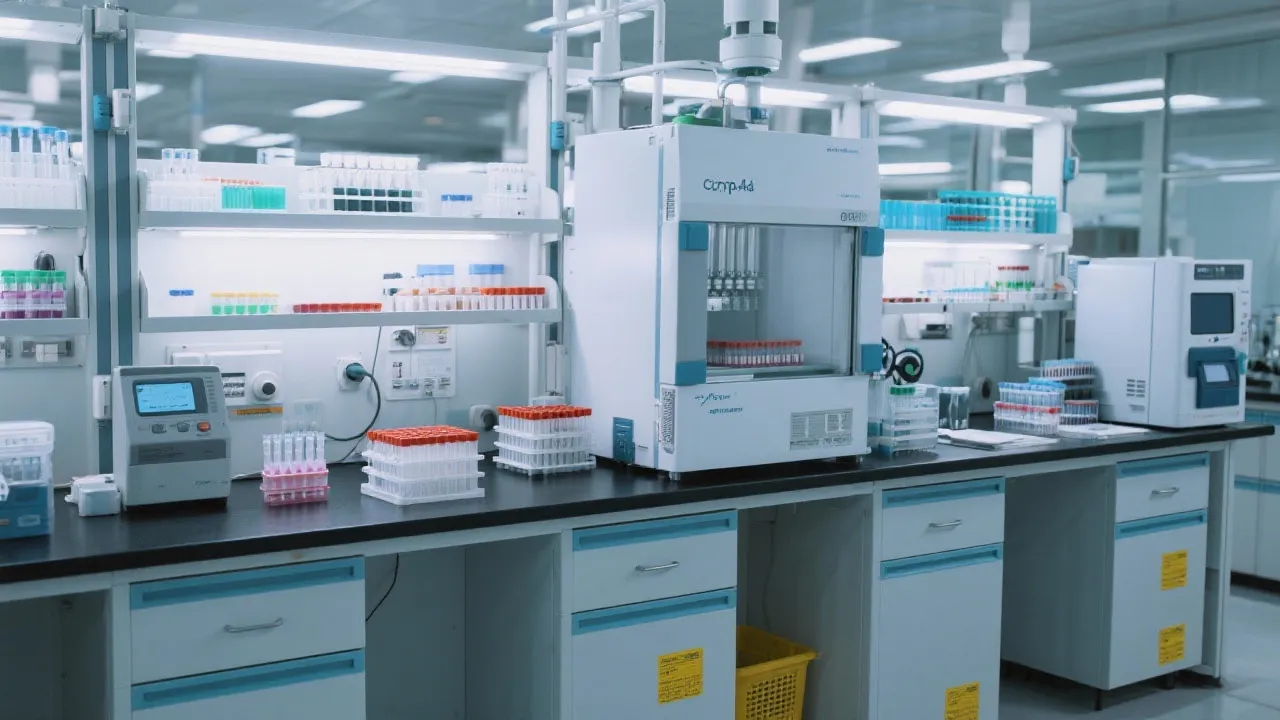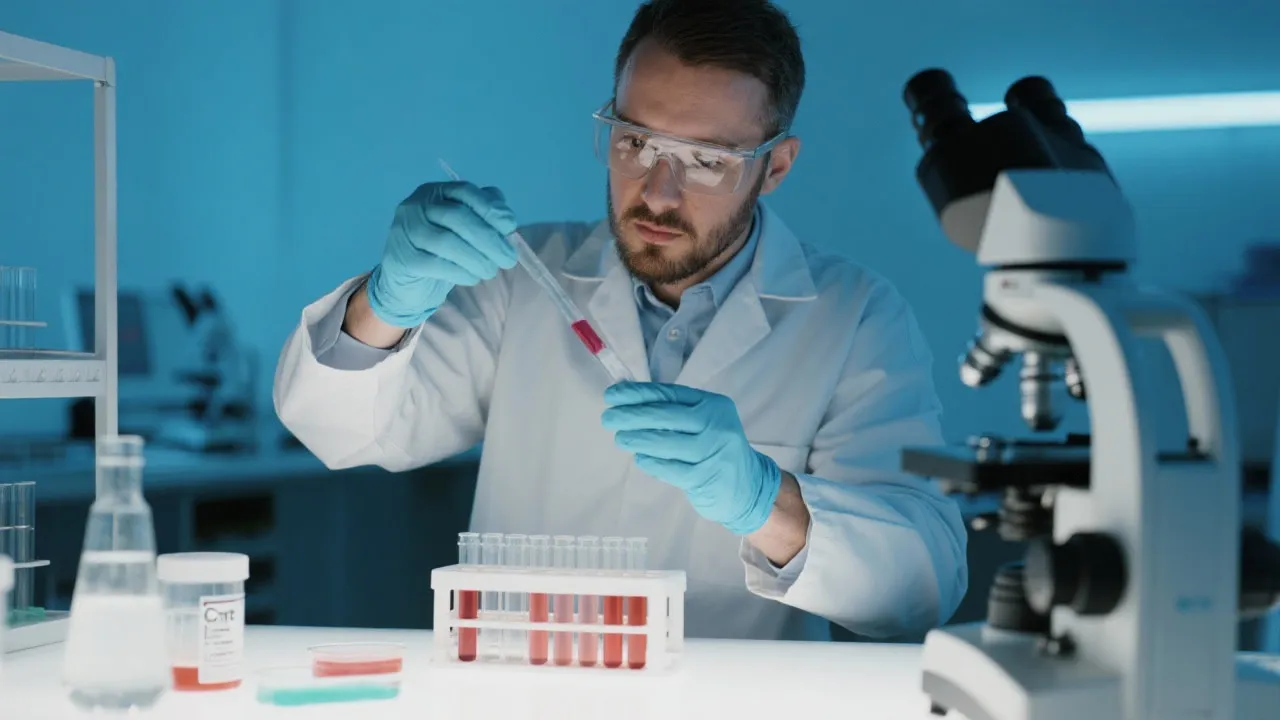Understanding Cyp1a1 Assay Techniques
The Cyp1a1 assay is an essential tool in biochemical research, focusing on the measurement and analysis of the activity of the cytochrome P450 1A1 enzyme. This enzyme plays a crucial role in the metabolism of xenobiotics and is predominantly found in the liver. Its activity is vital for understanding how various substances are detoxified in the body. This article explores the methodology, significance, and applications of the Cyp1a1 assay.

Introduction to Cyp1a1 Assay
The Cyp1a1 assay is a pivotal method in pharmacological and biochemical research that serves to elucidate the function and regulation of the enzyme cytochrome P450 1A1. This specific enzyme, part of the cytochrome P450 family, is predominantly found in the liver but also present in other tissues, playing a critical role in the biotransformation processes of a wide range of endogenous and exogenous compounds. Cytochrome P450 enzymes facilitate the oxidation of organic substances, essentially making them more water-soluble and thus easier for the body to excrete. Consequently, the Cyp1a1 assay not only aids in understanding the enzyme's activity but also provides insights into detoxification processes within the human body and a variety of organisms, ranging from model laboratory species to wildlife.
The Role of Cytochrome P450 1A1 in Xenobiotic Metabolism
Cytochrome P450 1A1 is particularly noteworthy for its ability to metabolize xenobiotics, which include a vast array of substances such as drugs, pollutants, and dietary compounds. Importantly, many of the substrates for Cyp1a1 are derived from external sources and environmental interactions, emphasizing the enzyme's role in protecting organisms from potential toxic effects. A prime example of these substrates includes polycyclic aromatic hydrocarbons (PAHs), which arise from incomplete combustion of organic materials and are found in substances like cigarette smoke, grilled foods, and vehicle emissions. The enzymatic reactions carried out by Cyp1a1 can lead to both increased toxicity and altered bioavailability of these compounds, thus presenting a double-edged sword in toxicity assessments.
Methodology of Cyp1a1 Assay
The Cyp1a1 assay typically involves multiple steps, beginning with the preparation of liver microsomes, which are sub-cellular fractions containing the necessary enzymes. These microsomes are isolated using ultracentrifugation, a technique that leverages the differences in density between cellular components to separate them effectively. After preparation, the microsomes are incubated with a specific substrate known to be metabolized by Cyp1a1. This incubation is conducted under controlled conditions, typically utilizing temperature and pH settings that mimic physiological conditions. By using radiolabeled substrates or specific spectrophotometric assays, researchers can track the conversion of substrates into metabolites over time.
Once sufficient incubation time has elapsed, the reaction is halted, often with a chemical stop solution that effectively ceases the enzymatic activity. Subsequent isolation of the reaction products can be performed using high-performance liquid chromatography (HPLC), a technique that separates compounds based on their interactions with a stationary phase and a mobile phase. Alternatively, spectrophotometric detection may also be employed, especially for compounds with distinct absorptive properties. In addition to in vitro studies, this assay can also be adapted for use with live cells or as part of in vivo studies depending on the research's aim, allowing for a comprehensive analysis of Cyp1a1 activity across different biological contexts.
Importance and Applications
The significance of the Cyp1a1 assay extends far beyond academic curiosity; it has vast applications in drug development, toxicology, and environmental science. For drug development, understanding how drugs are metabolized by Cyp1a1 is critical in predicting their efficacy and safety profiles. Since Cyp1a1 can either activate or detoxify various pharmaceutical compounds, its influence on drug clearance is essential during the early stages of drug discovery to avoid potential adverse reactions in patients. Furthermore, assessing drug-drug interactions is crucial before introducing new medications to the market. This helps in identifying any risk of increased toxicity due to the inhibition or induction of Cyp1a1 by concomitantly administered drugs.
In the field of toxicology, the ability to measure how pollutants and other harmful substances are processed by the body is of utmost importance. The Cyp1a1 assay provides valuable information that aids in evaluating environmental risks associated with chemical exposures. By understanding the metabolic pathways of toxicants such as PAHs, scientists can better predict the potential health effects on human populations and wildlife. Additionally, this has implications for regulatory agencies responsible for setting safe exposure limits.
Comparative Significance of In Vitro vs. In Vivo Cyp1a1 Assays
The choice between in vitro and in vivo assays is often driven by the specific research question being posed. Each approach has distinct advantages and inherent limitations. In vitro assays, particularly those utilizing liver microsomes or recombinant enzymes, offer high control over experimental conditions. This helps in isolating specific variables, enabling researchers to focus on how individual compounds interact with the enzyme. Moreover, such assays tend to be less expensive and quicker to perform, making them an attractive option during initial screening phases of research.
On the other hand, in vivo assays have the advantage of considering the complexity of metabolic networks that exist within a living organism. These studies can emulate real physiological conditions, thus providing more ecologically valid data. However, conducting in vivo studies can be cost-prohibitive and require significant ethical considerations, especially when using animal models or human subjects. The data obtained from in vivo studies is often more complex and nuanced due to the influence of multiple organ systems, genetic variability, and environmental factors.
Comparison Table: In Vitro vs. In Vivo Cyp1a1 Assays
| Feature | In Vitro | In Vivo |
|---|---|---|
| Control Over Conditions | High | Limited |
| Cost | Lower | Higher |
| Relevance to Whole Organism | Lower | Higher |
| Duration | Short | Long |
| Complexity of Data | Simple | Complex |
Step-by-Step Guide to Conducting a Cyp1a1 Assay
- Step 1: Prepare microsomes from liver tissue using ultracentrifugation. This involves homogenizing liver tissue in a suitable buffer and ultracentrifuging to separate the microsomes, which contain the necessary enzymes for the assay.
- Step 2: Select an appropriate substrate and prepare the reaction mixture. Common substrates for Cyp1a1 include 7-ethoxyresorufin, which can be readily converted into a detectable product.
- Step 3: Incubate the mixture under controlled conditions. This step requires strict monitoring of variables such as temperature and pH, which are critical for optimal enzyme activity.
- Step 4: Terminate the reaction at the designated time using a stop solution, such as an acidified ethanol solution, to halt enzymatic activity and stabilize the reaction products.
- Step 5: Analyze the resulting products via HPLC or spectrophotometry. HPLC will separate the metabolites based on polarity and molecular weight, while spectrophotometric measurements will quantify the extent of substrate conversion.
Factors Influencing Cyp1a1 Activity
The activity of Cyp1a1 can be influenced by a multitude of factors, including genetics, age, sex, and environmental exposure. Individual genetic variability can lead to significant differences in enzyme activity, a phenomenon known as polymorphism. For instance, certain genetic variants can result in high levels of enzyme expression in some individuals, increasing their risk for developing toxicity from specific drugs or environmental chemicals.
Age and sex also play crucial roles in enzyme regulation. Generally, younger individuals may exhibit different metabolic profiles compared to older adults, influenced by developmental changes in liver enzyme expression. Additionally, hormonal differences between males and females can also modulate enzyme activity, leading to sex-dependent differences in drug metabolism and toxicity. For example, it has been noted that females might metabolize some drugs faster due to higher circulating levels of estrogen, which can modulate cytochrome P450 activity.
Environmental factors, particularly exposure to certain chemicals, can induce or inhibit Cyp1a1 activity. Compounds such as polycyclic aromatic hydrocarbons can trigger the expression of Cyp1a1 through the activation of the aryl hydrocarbon receptor (AhR), resulting in increased production of the enzyme and enhanced metabolism of related substrates. Conversely, exposure to certain medications or lifestyle compounds such as grapefruit juice can inhibit Cyp1a1 activity, thereby affecting drug clearances and leading to potential adverse effects.
FAQs
- What is the primary substrate for Cyp1a1?
Cyp1a1 primarily metabolizes polycyclic aromatic hydrocarbons (PAHs), which are common environmental pollutants and are also involved in the metabolic activation of certain pro-carcinogens.
- Why is the Cyp1a1 assay important for pharmaceutical development?
This assay helps determine how a drug is metabolized and whether it inhibits or induces the Cyp1a1 enzyme, influencing drug efficacy, bioavailability, and safety. The findings guide dose adjustments and the assessment of potential drug interactions.
- Can Cyp1a1 assay be used to assess dietary impacts on drug metabolism?
Yes, it can determine how different foods or herbal supplements affect the metabolic activity of Cyp1a1. For example, certain dietary constituents such as cruciferous vegetables may induce Cyp1a1 activity, altering the metabolism of co-administered drugs.
- What are the challenges associated with the Cyp1a1 assay?
Challenges include the need for specialized equipment, controlled experimental conditions, and the potential for inter-individual variability in enzyme activity. Additionally, substrate solubility and stability can pose difficulties in assay design and interpretation.
- How does Cyp1a1 activity vary between species?
Cyp1a1 is conserved across many species, but the level of expression and activity can vary significantly. This variability is critical in comparative toxicology studies, affecting how different organisms respond to environmental pollutants and pharmacological agents.
- What are some novel methods for assessing Cyp1a1 activity?
Recent technological advancements have introduced novel techniques such as microfluidic platforms and reporter gene assays, improving throughput and precision in measuring Cyp1a1 activity in various biological matrices.
Conclusion
In conclusion, the Cyp1a1 assay is a fundamental technique in various scientific disciplines, promising insights into chemical metabolism crucial for human health and environmental safety. Its applications in drug development, toxicological assessments, and environmental monitoring are invaluable. Continuous advancements in assay technologies and an increasing understanding of the molecular mechanisms governing Cyp1a1 activity are likely to expand its applications further. Improved methodologies promise to offer more precise predictions and analyses in the future, ultimately enhancing our ability to assess drug safety and environmental risks associated with chemical exposures.
Future Perspectives on Cyp1a1 Research
The future of Cyp1a1 research is poised for substantial growth, driven by emerging technologies and a better understanding of the enzyme's complexities. As genomics and proteomics continue to evolve, researchers are gaining insight into the regulatory networks that govern Cyp1a1 expression and activity. The integration of systems biology approaches provides a comprehensive framework, allowing for the exploration of multi-level interactions that impact drug metabolism and toxicity.
Additionally, advancements in high-throughput screening methods are revolutionizing how assays are conducted, facilitating large-scale studies that assess numerous compounds simultaneously. This capability has significant implications for drug discovery, enabling quicker identification of lead candidates with desirable metabolic profiles. Furthermore, computer-aided drug design using predictive modeling of Cyp1a1 interactions may enhance the drug development process by elucidating potential metabolic pitfalls before clinical trials.
Another exciting development in Cyp1a1 research involves the burgeoning field of personalized medicine. By elucidating how genetic polymorphisms affect Cyp1a1 activity, there is potential to tailor drug therapies based on an individual’s metabolic capacity. This approach not only enhances the efficacy of medications but also minimizes adverse reactions, leading to safer therapeutic regimens.
Finally, the environmental implications of Cyp1a1 activity cannot be overlooked. As global awareness of environmental health increases, understanding how Cyp1a1 metabolism influences the biotransformation of pollutants remains critical. Research efforts focused on wildlife and ecological health will prove essential as pollution continues to threaten both ecosystems and human populations. By studying how different species metabolize toxicants, researchers can inform conservation efforts and regulatory policies to address environmental contaminants effectively.
Overall, the Cyp1a1 assay is more than just a laboratory technique; it represents a dynamic intersection of pharmacology, toxicology, and environmental science, each contributing to a broader understanding of the critical roles cytochrome P450 enzymes play in health and disease.






